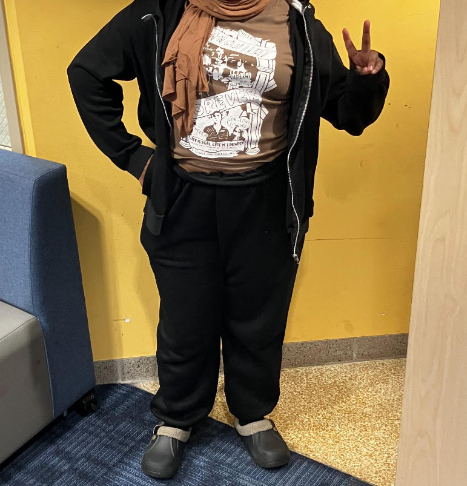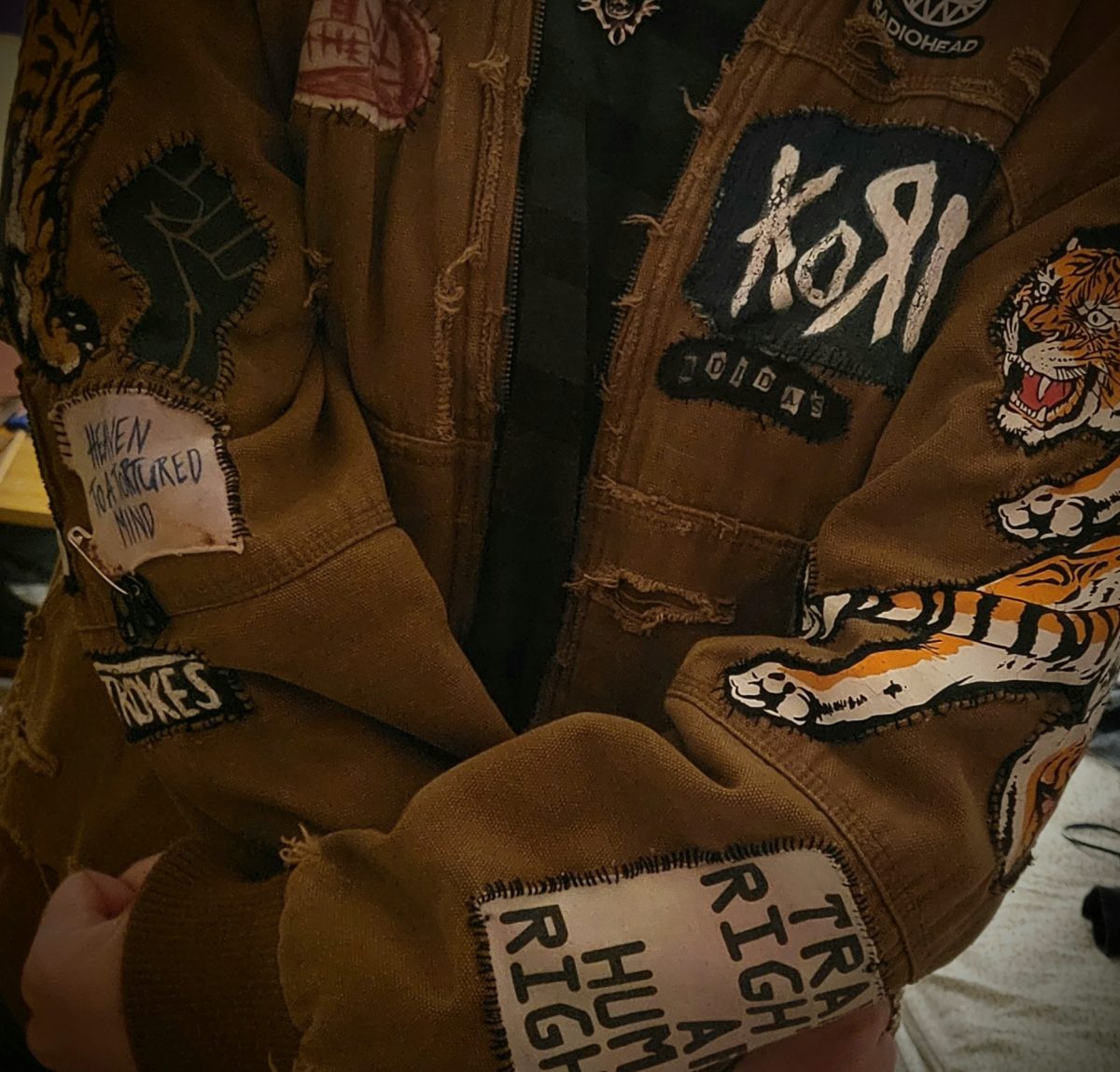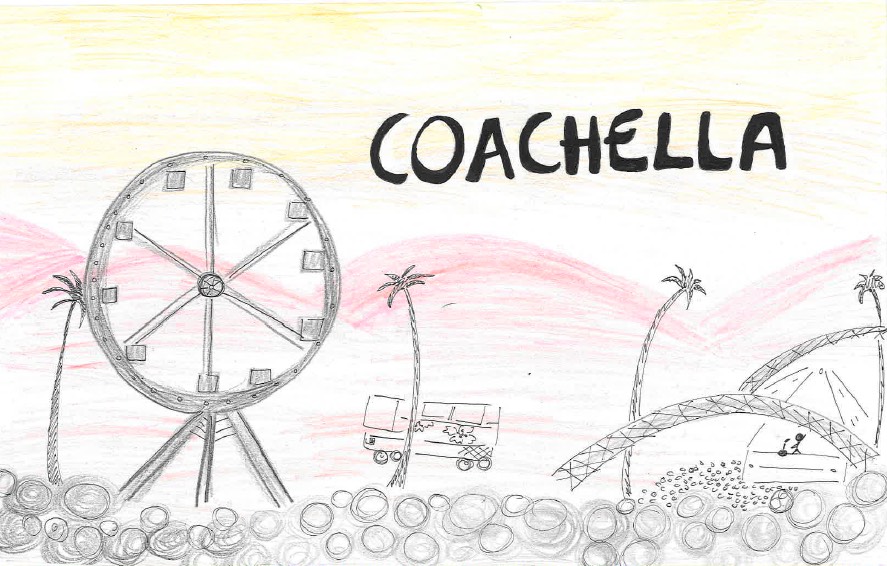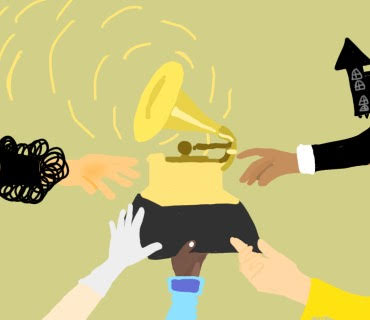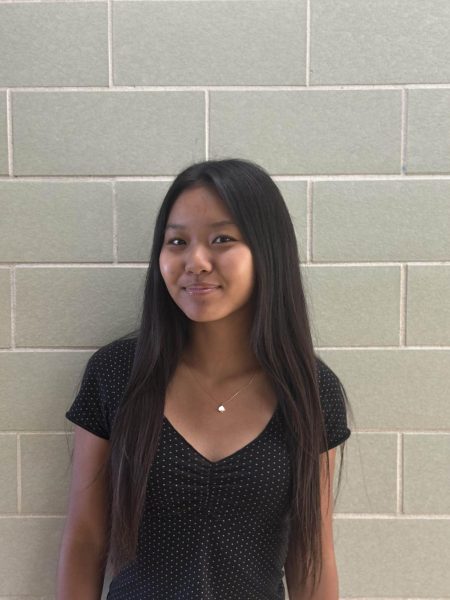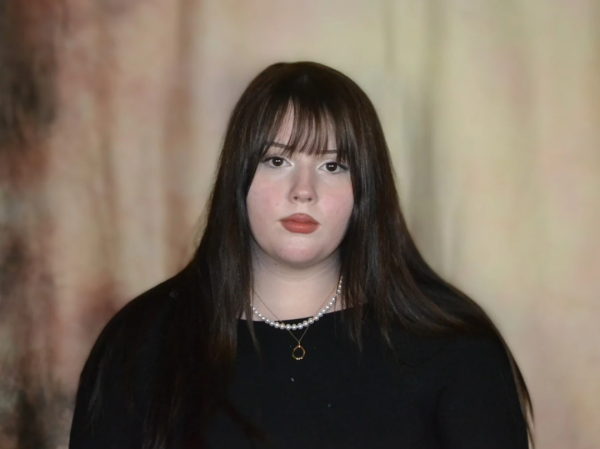There’s business casual, and there’s casual wear…and then there’s wearing pajamas to school. Throughout the years, trends have differed when it comes to high school fashion, and it just so happens that currently, wearing pajamas (PJs) to school is one of the latest.
With the wave of the COVID-19 pandemic in 2020, valuing comfort over style has become more prevalent throughout the years with many having to stay quarantined for so much of the time. The trend of being minimalist and staying cozy had come along in tandem with other popular trends like 2000s throwbacks (wide-leg pants, oversized shirts, etc.) and relaxed streetwear. The rise and normalization of PJs in public on the heels of all of this should really come as no surprise. Feeling like yourself and being comfortable while doing it is one of, if not the highest priority for any fashion trend, suggesting pretty clearly why some students have started choosing to wear pajamas when going out more often. PJs can be an easy wear for students, especially when having to wake up early in the morning for school. Plaid baggy pajama pants paired with any simple top and a pair of Crocs may not win you a spot on a runway, but since when is high school a formal affair?
Nevertheless, there’s been an ongoing discourse on whether or not to wear PJs at school. Some students and staff see it as improper and “gross” for people to look as if they just rolled out of bed, while others claim there’s no reason to get all dolled up for school, so why not just wear whatever?
“It’s kind of funny how a few years ago people used to show up to school with full glam and everything, but nowadays people just wear sweats or pajama pants,” Barbie Ortiz Robles (10) said.
While opinions may differ, it all really depends on the school in this situation, whether it’s deemed acceptable in their district or not. Some can be more lenient while others — not so much. Even so, schools that don’t set too strict of a dress code will likely see many more students wearing whatever they please, including PJs. Our school, Columbia Heights High School (CHHS), is a prime example of a public school that allows students to wear any clothing they desire with no set restrictions, even if some may disagree with the lack of emphasis on professionalism in the student handbook.
“I don’t have an issue with it personally. It’s been kind of becoming a trend now,” said English Teacher Michelle Douglas, “And as long as it’s not inappropriate [clothing] I don’t see an issue with it.”
A student’s choice to wear what they want gives students freedom in wearing what they are comfortable in and how they care to present themselves. Many could argue and say that what you wear can disrupt your performance in school but according to The Mountain Echo they stated, “This argument is mainly based on the idea that school is a professional setting, but many on staff and in the student body don’t see it that way. School is a place of learning and growing, but it’s not a job for students, unlike the staff members. Students shouldn’t have to keep a professional appearance for something they don’t work for.” PJs are seen as a homey and easy-to-wear outfit choice. It gives the student a sense of comfort in themselves and within their school settings.
“I think pajamas in school are common and it’s become the new norm,” Daphne Kleinschmit (10) said. “Therefore, there is little to no judgment when people are seen wearing them.”
Pajama wearing in schools across the globe has become much more acceptable as the years go by, proving nothing other than a basic evolution of students’ clothing choices in recent years, which is heavily influenced by both the homebody nature of life during COVID as well as the hard-to-argue fact that students naturally prioritize comfortability when learning and studying over worrying about how they look.
After reading this, you might even spot some people wearing PJs on the way to your next class, and maybe you could find yourself doing so too — or not, whatever you find most comfortable. In fact, what matters most is making the choice that’s right for you, not anyone else. Isn’t that what children have been taught for centuries anyway — to never judge a book by its cover?


